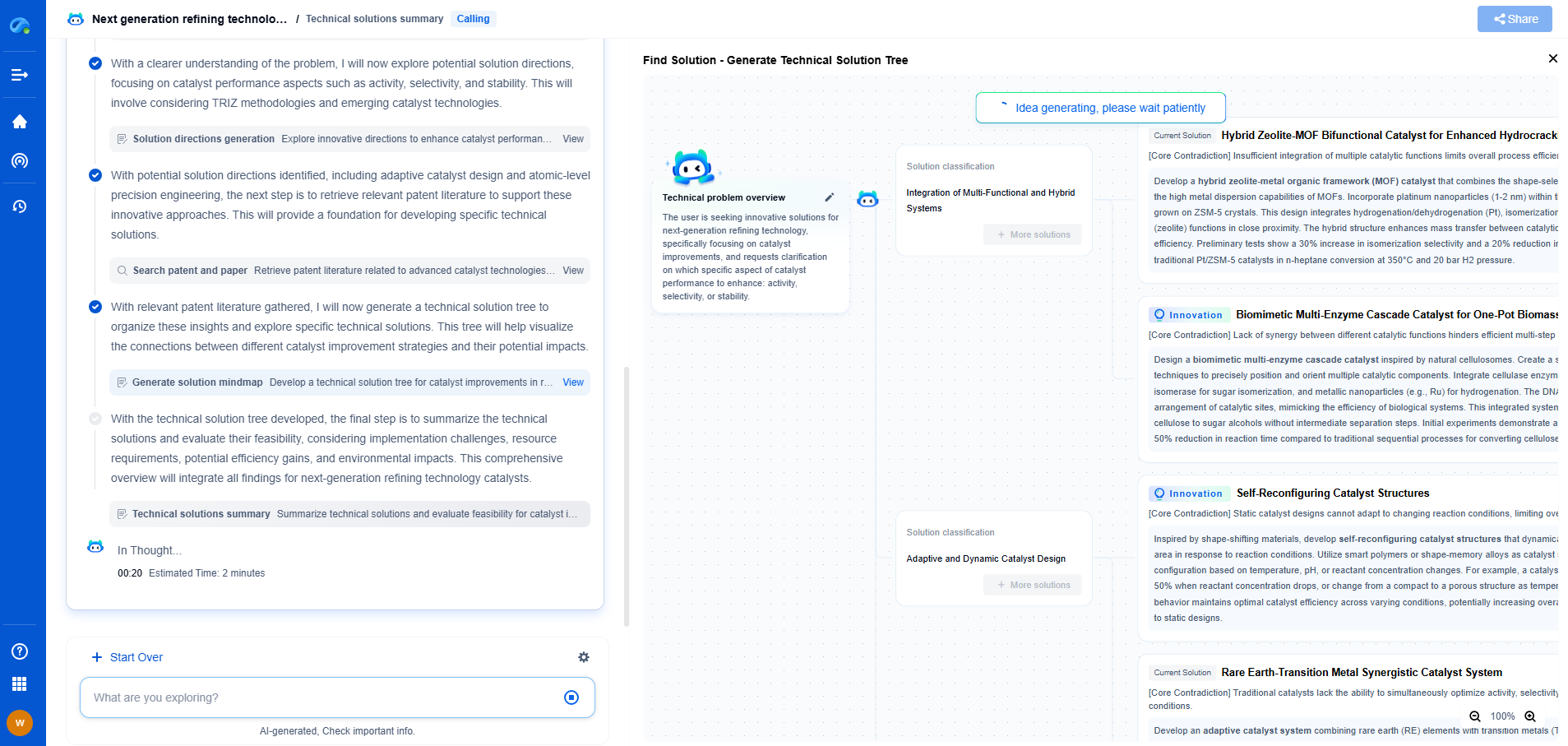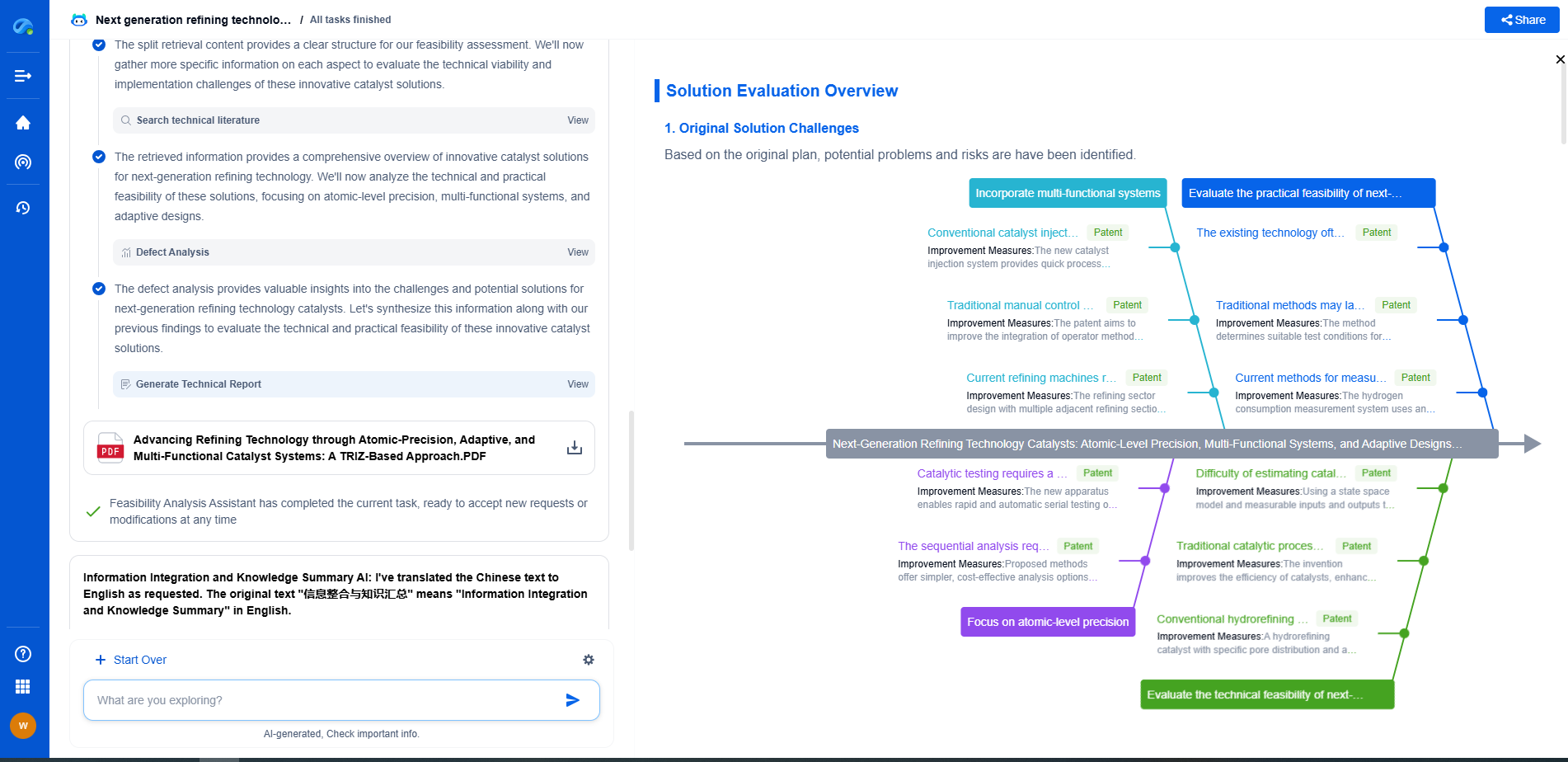Air Cooling vs Liquid Cooling: Which Battery Thermal Management System Is Better?
JUN 20, 2025 |
With the rise of electric vehicles (EVs) and advancements in technology, the thermal management of batteries has become a crucial aspect of automotive design. Efficient battery thermal management systems are required to maintain battery performance, longevity, and safety. Two prominent methods in battery cooling are air cooling and liquid cooling. Each has its own set of advantages and limitations. In this blog, we delve into the specifics of each system to determine which might be more suitable for different applications.
Understanding Battery Thermal Management Systems
Battery thermal management systems are essential to prevent overheating, which can lead to reduced battery life or, in extreme cases, safety hazards. Both air and liquid cooling systems aim to keep the battery within an optimal temperature range to ensure efficient operation and longevity.
Air Cooling Systems: Simple and Cost-Effective
Air cooling systems utilize the ambient air to dissipate heat from the batteries. This is achieved through either passive or active methods. Passive air cooling involves natural convection, where heat is transferred to the surrounding air without any additional components. Active air cooling, on the other hand, involves fans or blowers to increase airflow around the battery pack.
Advantages of Air Cooling:
1. Simplicity: Air cooling systems are typically simpler in design, resulting in fewer components, which can lead to lower manufacturing and maintenance costs.
2. Cost-Effective: Because of their simplicity, air cooling systems are often less expensive than liquid cooling systems.
3. Lightweight: Without the need for additional fluid or complex hardware, air cooling systems can contribute to a lighter overall vehicle design.
Limitations of Air Cooling:
1. Limited Cooling Capacity: Air cooling may be insufficient for high-performance vehicles or those operating in extreme conditions.
2. Dependence on Ambient Conditions: The effectiveness of air cooling is significantly influenced by the surrounding temperature and humidity, which can vary widely.
Liquid Cooling Systems: Efficient and Precise
Liquid cooling systems use a coolant fluid to absorb and transfer heat away from the battery pack. The fluid circulates through channels or plates adjacent to the battery cells, transferring heat to a radiator or heat exchanger where it is dissipated.
Advantages of Liquid Cooling:
1. Superior Thermal Management: Liquid cooling systems offer greater efficiency and precision in controlling battery temperature, making them ideal for high-performance applications.
2. Consistency: Liquid cooling is less affected by ambient temperature variations, providing consistent thermal management across different environments.
3. Enhanced Battery Performance: By maintaining optimal battery temperature, liquid cooling can help extend battery life and improve overall performance.
Limitations of Liquid Cooling:
1. Complexity: Liquid cooling systems are more complex, involving pumps, radiators, and other components that increase design complexity and potential points of failure.
2. Cost: The initial cost of implementing liquid cooling systems can be higher due to their complexity and the materials involved.
3. Additional Weight: The system components and coolant add weight, potentially impacting vehicle efficiency.
Choosing Between Air and Liquid Cooling
The choice between air and liquid cooling systems largely depends on the specific requirements and constraints of the application. For everyday EVs operating in moderate climates, air cooling may provide a cost-effective and lightweight solution. However, for high-performance vehicles, liquid cooling systems offer the necessary precision and efficiency to maintain optimal battery conditions under demanding operating scenarios.
Conclusion
In the debate between air cooling versus liquid cooling for battery thermal management, there is no one-size-fits-all answer. Each system has its strengths and weaknesses that make it suitable for different applications and environments. Understanding the specific needs of your vehicle and weighing these factors will guide you to the right decision. Whether prioritizing cost and simplicity or seeking superior performance and reliability, both air and liquid cooling systems can effectively manage battery thermal conditions when applied appropriately.
Accelerate Breakthroughs in Fuel Cell and Battery Innovation—with the Power of AI
From solid-state battery breakthroughs to high-efficiency hydrogen fuel cells, keeping pace with fast-evolving chemistries, global patent landscapes, and emerging application pathways is an ever-growing challenge for R&D and IP professionals.
Patsnap Eureka, our intelligent AI assistant built for R&D professionals in high-tech sectors, empowers you with real-time expert-level analysis, technology roadmap exploration, and strategic mapping of core patents—all within a seamless, user-friendly interface.
Whether you're optimizing cathode formulations, evaluating electrolyte stability, or navigating the crowded patent space around battery pack design, Eureka empowers you to move faster and with greater confidence.
Start your journey with Patsnap Eureka today—streamline your research, enhance decision-making, and power the future of energy with AI-driven clarity.
- R&D
- Intellectual Property
- Life Sciences
- Materials
- Tech Scout
- Unparalleled Data Quality
- Higher Quality Content
- 60% Fewer Hallucinations
Browse by: Latest US Patents, China's latest patents, Technical Efficacy Thesaurus, Application Domain, Technology Topic, Popular Technical Reports.
© 2025 PatSnap. All rights reserved.Legal|Privacy policy|Modern Slavery Act Transparency Statement|Sitemap|About US| Contact US: help@patsnap.com

